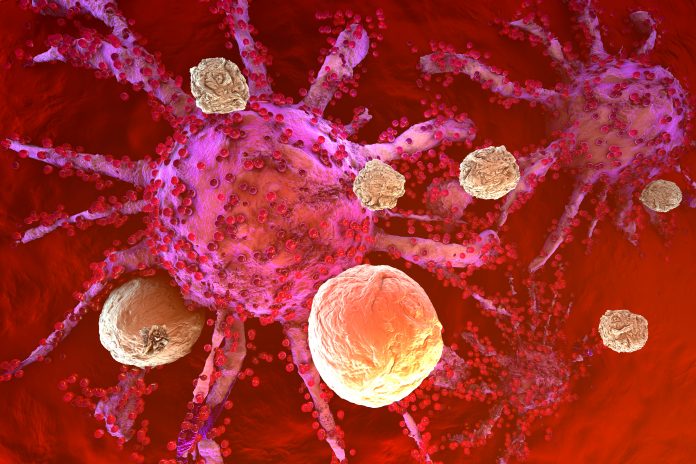
Researchers from the University of North Carolina have discovered that disrupting the cell’s innate immune response to DNA damage could be a mechanism of cancer resistance. In their paper in Nature, a team proposes that the protein MRE11 could serve as a key in activating the cGAS-STING pathway, which is crucial for recognizing DNA damage and activating the innate immune system.
In the presence of damaged DNA within cells, the cGAS-STING pathway is unleashed to prevent cancer formation. However researchers did not know the precise mechanism of how the pathway becomes activated. The enzyme called cyclic GMP-AMP synthase (cGAS) is well known for its role as a messenger for the immune system, tasked with calling on the immune system to seek out threats, such as DNA-damaged cells, and eliminating them from the body.
To learn more about how cGAS becomes activated, the team used CRISPR technology in mouse models and cells isolated from mice, focusing on breast cancer models. Additionally, they conducted experiments with human triple-negative breast cancer cell lines.
This combination of cell-based and animal studies provided a comprehensive picture of MRE11’s role in innate immune response and cancer suppression. “We found that when MRE11 recognizes and binds to broken DNA, cGAS is freed from histones and can detect DNA damage and activate the innate immune system, significantly impeding cancer cell growth,” explains co-first author Min-Guk Cho, a postdoctoral fellow in the lab of senior author Gaorav Gupta, MD, PhD, at UNC. “Our findings provide new insights into how the immune system detects DNA damage and open new avenues for suppressing breast cancer.”
Cho explains that when DNA damage occurs, nuclear cGAS, with the assistance of MRE11, moves from the nucleus to the cytosol, recognizing the increased cytosolic double-stranded DNA caused by DNA damage. It synthesizes 2′-3′-cyclic GMP-AMP (2’3-cGAMP), which then binds to STING. This binding recruits TBK1, leading to the phosphorylation of IRF3. Phosphorylated IRF3 forms a dimer, and this dimerized pIRF3 enters the nucleus to express Type I Interferons, thus activating the innate immune system.
This research builds on the discoveries published in 2020 from UNC colleagues that revealed that cGAS is “locked up” to prevent the body from unleashing the inflammatory immune response unless it is necessary.
“cGAS is in a ‘turned off’ state because it has a much stronger affinity for histones molecules, which are proteins around which our DNA is packaged, than to DNA itself,” said Dr. Gupta. “You can think of cGAS as being locked up through its binding to histones, not able to perform its duty to recognize DNA unless it is freed by some key.”
Gupta’s lab wanted to evaluate if MRE11, a compound his lab was already studying and which is known to recognize broken fragments of DNA, may also be the key that releases cGAS from histones.
“We knew that MRE11 was known for detecting and repairing DNA damage, but the evidence I uncovered indicated that MRE11 plays a different role, namely in activating the innate immune system,” says Cho.
Researchers also found that when MRE11 and cGAS interact with one another, they initiate a specialized form of cell death called necroptosis.
“Necroptosis is a highly immunogenic cell death process,” Cho explains, because the killed cells release various signaling molecules that can provoke additional immune responses. These signals help the immune system recognize and respond to the dead cells. “Our findings indicate that in breast cancer, the MRE11-cGAS-STING pathway regulates the expression of the key protein ZBP1, which induces necroptosis signals,” he adds. This protein triggers the phosphorylation of two subunits, RIPK3 and MLKL, ultimately leading to cell membrane disruption and cell death.
Necroptosis is fundamentally related to various other cancers associated with DNA damage. In breast cancer, especially in aggressive forms like triple-negative breast cancer, poor prognosis after radiation and chemotherapy is often due to certain cancers acquiring resistance to immune cells.
Says Cho, “Our findings have confirmed that in breast cancer cells and some other cells, MRE11 helps activate cGAS.” These results suggest that not only breast cancer, but other cancers might respond to this approach.













